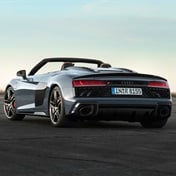
Johannesburg - Cities across the UK have implemented a speed reduction system where cardboard cut-outs of police officers are strategically placed to get speedsters to slow down.
While official results have not been measured, more and more cities are joining because of the unofficial results already seen. Shops are even considering using it to reduce shoplifting.
Earlier in 2017, the Bwakena toll route introduced a similar method.
Their cardboard cut-outs seemed just as effective in reducing speeds. As it is too difficult to have a strong traffic police presence along holiday routes, the cut-outs help encourage motorists to obey speed limits.
READ: Spotted cardboard police? 5 things you should know about SA’s cut-out cop car
While persuading drivers to obey the speed limit is an essential part of road safety, it is also important for drivers to understand the importance of speed differentiation.
Managing director of MasterDrive, Eugene Herbert, explains that while a speed limit on a highway may be 120km/h, this is not always the safest speed: “If you are driving in heavy rain with reduced visibility, driving below the speed limit may be a safer option."
Herbert says: "This kind of weather requires more time to react and slower speeds give you that extra time and more control if you need to take evasive action. Drivers need to start seeing speed limits not as a ‘target’ which they need to meet but as the maximum speed they must go in a perfect driving situation. Your speed instead needs to be determined by a number of external factors."
These factors include:
• Weather
• Traffic levels
• Potential hazards on the side of the road
• Visibility
• Speed of other drivers
The same theory also applies if you are travelling much more slowly than those around you.
“If you are driving at 80km/h in the ‘fast lane’ of the highway and other drivers are coming up behind you at speeds of 120km/h, maybe even faster, you are creating a very dangerous situation. While 80km/h is the minimum speed limit, and therefore legal, it is still not the safest option in the fast lane.
WATCH: Here's why you shouldn't hog the 'fast lane'
“Alternatively, if you feel you can drive just as well as you usually do while it’s raining, the other cars on the road may make slowing down a road safety necessity nonetheless. If every other car is slowing down, there is no longer a way for you to continue at your speed without becoming a hazard,” says Herbert.
What are some of your pet peeves on the road? Email us
There is no doubt that South African drivers are too fond of driving too fast, he claims.
Over the last few weeks two stories about reckless speeding have made headlines. One was a police officer driving 180km/h with a taxi full of children and the other was Orlando Pirates player, Happy Jele, who was allegedly caught driving 223km/h.
"For many South Africans, speed limits remain ‘targets’ or merely ‘guidelines’ rather than something that is there to ensure safe roads for everyone", claims Herbert.
As previously stated by former transport minister, Dipou Peters, drivers need to take responsibility for their actions. The first step in stopping high speed crashes is for citizens to recognize that it starts with them. Or, as in the case above, with law enforcers as well. There is only so much cardboard cut-outs can achieve.




 Publications
Publications
 Partners
Partners










